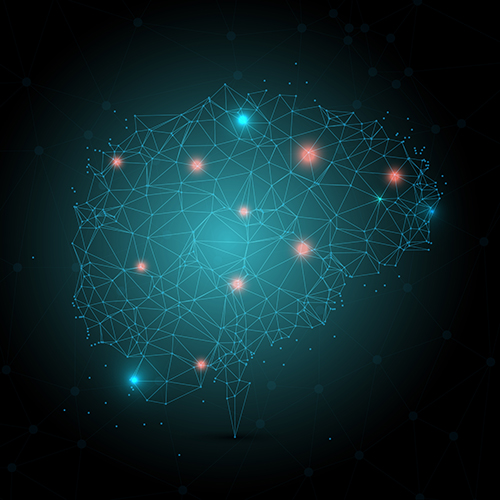- Research News
International collaboration sheds new light on how information travels in our brains
14 March 2023
In a collaboration with scientists from the University of Melbourne in Australia and Indiana University in the US, a team of Human Brain Project researchers from the of Aix-Marseille University has analysed the propagation of electrical signals in the human brain after direct stimulation. The results show that mathematical models of network communication can predict the propagation of signals, and that a model of diffusive flow of information, rather than a direct path, often seems to be a more reliable predictor of how information travels in the brain. The study, led by Caio Seguin from the University of Melbourne, has been published in the journal Neuron.

Knowing the connections between neurons (the so-called human connectome) is vital for understanding how the brain processes information. “We know information travels through the brain via electrical signals, but which path does it travel to get from point A to point B? For example, does it take the shortest path?” says Maciej Jedynak, researcher at the Institut de Neurosciences des Systèmes in Marseille. “Another option would be more diffusive: the signal could travel via multiple neurons, splitting up in different directions and spreading across the cortex.” The researchers simulated competing strategies combining structural and functional datasets obtained from 550 epileptic patients.
In the course of preparation for brain surgery, the patients had electrodes implanted into their brains. Some electrodes were used to stimulate the brain with an electric pulse, while other electrodes, implanted in various brain regions, recorded the resulting response. “This allowed us to have a large dataset of signal spread in the whole cortical network,” says Jedynak. “We then simulated different strategies for how these signals could have propagated. Using machine learning techniques, we compared theoretical results with observed data.”
While the researchers found that the distance between stimulating and recording sites tends to be the best predictor for the response, they still observed that network strategies, especially those involving diffusive spread, provide accurate predictions going beyond the simple distance rule. “Our work validates the network approach to understanding the brain's ability to communicate, which is the root of brain function,” says Jedynak.
Text by Roberto Inchingolo
Reference: Caio Seguin, Maciej Jedynak, Olivier David, Sina Mansour, Olaf Sporns, Andrew Zalesky, Communication dynamics in the human connectome shape the cortex-wide propagation of direct electrical stimulation, Neuron, 2023, ISSN 0896-6273,
https://doi.org/10.1016/j.neuron.2023.01.027.



